Customer Kudos
"I've used every mail-order, catalog, app, major websites out there to get my gear for 15+ years. ONLY zZounds in the past 5. Customer service, knowledge, communication and compassion is top notch! Traits no longer available in our big corps! zZounds is the best!"
February 15, 2024

Audio Interface Buying Guide: What to Know Before You Buy
In the home studio, your audio interface is the heart of your recording setup. Audio interfaces capture sound sources (like microphones and guitars), convert them into digital data, and send them to your computer over USB, Thunderbolt, Lightning connector, FireWire, or PCIe card for recording in your DAW software, or streaming via an app. Because your interface's microphone preamps and analog-to-digital converters can have a huge impact on the sound quality of your recordings and streams, it's smart to invest in the best interface you can afford.
Scroll down for 9 Questions to Ask Before Buying an Audio Interface »
Some interfaces process just one or two channels (tracks) at a time, and some process dozens of simultaneous inputs. Interfaces are often described in terms of their total I/O (input/output) channel count: an interface with 2 inputs and 4 outputs is "2-in/4-out" or "2x4." Choose an interface with enough inputs for each individual source you want to record simultaneously. To record multiple XLR microphones, you'll need an interface with multiple mic preamp channels.
In this buying guide, we've sorted interfaces by number of mic preamps -- one, two, four, or eight.
Scroll down for 9 Questions to Ask Before Buying an Audio Interface »
Some interfaces process just one or two channels (tracks) at a time, and some process dozens of simultaneous inputs. Interfaces are often described in terms of their total I/O (input/output) channel count: an interface with 2 inputs and 4 outputs is "2-in/4-out" or "2x4." Choose an interface with enough inputs for each individual source you want to record simultaneously. To record multiple XLR microphones, you'll need an interface with multiple mic preamp channels.
In this buying guide, we've sorted interfaces by number of mic preamps -- one, two, four, or eight.
Audio Interfaces with 1 Mic Preamp
More inputs isn't always better! For recording one microphone at a time, an interface with one mic preamp is all you need. Many audio interfaces with one mic preamp also include a second channel with a 1/4" line/instrument input -- ideal for recording your direct guitar signal. Some audio interfaces, such as the IK Multimedia iRig Pro I/O, come with Lightning and USB cables to connect to your iOS device, Mac, or PC.
If you're starting a setup from scratch, a package like the Rode Complete Studio Kit is a great value. You'll get the Rode NT1 large-diaphragm condenser microphone, AI-1 USB audio interface, shock mount, and cables, so you can start recording right away.
If you're starting a setup from scratch, a package like the Rode Complete Studio Kit is a great value. You'll get the Rode NT1 large-diaphragm condenser microphone, AI-1 USB audio interface, shock mount, and cables, so you can start recording right away.

Focusrite Scarlett Solo Gen 4 USB Audio Interface
$139.99
- No Credit Check6 x$23.33
- No Credit Check4 x$35.00

IK Multimedia iRig Pro I/O USB and iOS Audio/MIDI Interface
$149.99
- No Credit Check6 x$25.00
- No Credit Check4 x$37.50

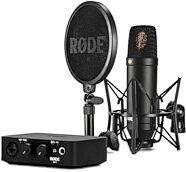
Rode Complete Studio Kit with NT1 Microphone and AI-1 USB Audio Interface
$349.00
- 8 x$43.63
- No Credit Check6 x$58.17
- No Credit Check4 x$87.25
Audio Interfaces with 2 Mic Preamps
Interfaces with 2 mic preamps give you the flexibility to record two mic channels simultaneously -- like a mic on guitar and vocal, or a stereo pair of mics in front of a group. Many 2-channel interfaces are designed as "desktop" interfaces, and feature a large ergonomic knob for controlling volume and other settings.

Focusrite Scarlett 2i2 Gen 4 USB Audio Interface
$199.99
- No Credit Check6 x$33.33
- No Credit Check4 x$50.00

Focusrite Scarlett 8i6 3rd Gen USB Audio Interface
$249.99
- No Credit Check6 x$41.66
- No Credit Check4 x$62.50
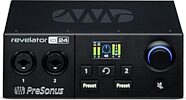
PreSonus Revelator io24 USB-C Audio Interface
$99.99
- No Credit Check6 x$16.66
- No Credit Check4 x$25.00
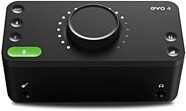
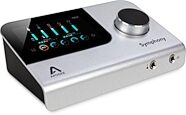
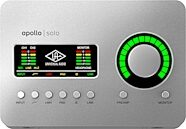
Universal Audio Apollo Solo USB Audio Interface (for Windows)
$499.00
- 8 x$62.38
- No Credit Check6 x$83.17
- No Credit Check4 x$124.75

Universal Audio Apollo Twin Duo MkII Thunderbolt 2 Audio Interface
$899.00
- 12 x$74.92
- 8 x$112.38
- No Credit Check6 x$149.83
- No Credit Check4 x$224.75
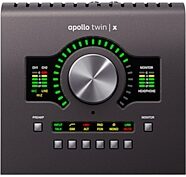
Universal Audio Apollo Twin X Duo Thunderbolt 3 Audio Interface
$999.00
- 12 x$83.25
- 8 x$124.88
- No Credit Check6 x$166.50
- No Credit Check4 x$249.75
Audio Interfaces with 4 Mic Preamps
If you're planning on recording multiple musicians, it's nice to have 4 mic preamp channels at your disposal. These larger interfaces typically also give you more output channels -- useful for incorporating outboard gear into your setup, or for setting up multiple headphone sends. However, unlike smaller interfaces, they are typically not able to be bus-powered via USB.
The PreSonus StudioLive AR8c is an 8-channel analog mixer that happens to have a 8-in/4-out USB-C audio interface built in (not to mention a stereo SD Card recorder.) The AR8c is a great choice if you need a desktop audio interface that you can also take out to live performances and run as an analog mixer, no computer required.
The PreSonus StudioLive AR8c is an 8-channel analog mixer that happens to have a 8-in/4-out USB-C audio interface built in (not to mention a stereo SD Card recorder.) The AR8c is a great choice if you need a desktop audio interface that you can also take out to live performances and run as an analog mixer, no computer required.

PreSonus StudioLive AR8c 8-Channel Mixer/USB-C Interface
$499.99
- 8 x$62.50
- No Credit Check6 x$83.33
- No Credit Check4 x$125.00

Focusrite Scarlett 18i8 3rd Gen USB Audio Interface
$359.99
- 8 x$45.00
- No Credit Check6 x$60.00
- No Credit Check4 x$90.00

TASCAM Series 208i USB Audio Interface
$499.00
- 8 x$62.38
- No Credit Check6 x$83.17
- No Credit Check4 x$124.75


Universal Audio Volt 476P USB Audio Interface
$469.00
- 8 x$58.63
- No Credit Check6 x$78.17
- No Credit Check4 x$117.25

Antelope Audio Discrete 4 Pro Synergy Core USB/Thunderbolt 3 Audio Interface
$995.00
- 12 x$82.92
- 8 x$124.38
- No Credit Check6 x$165.83
- No Credit Check4 x$248.75

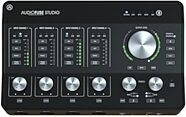
Arturia AudioFuse Studio USB Audio Interface
$999.00
- 12 x$83.25
- 8 x$124.88
- No Credit Check6 x$166.50
- No Credit Check4 x$249.75
Audio Interfaces with 8 (or More) Mic Preamps
For recording a full band playing live -- or a fully miked-up drum kit -- you'll probably need at least 8 mic preamps. These audio interfaces are a cost-effective way to get 8 (or more) microphone channels into your computer. Plus, these large interfaces typically offer a full complement of digital inputs and outputs. zZounds customers love these models because they offer serious flexibility and bang-for-the-buck.

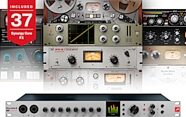
Antelope Audio Discrete 8 Pro Synergy Core USB/Thunderbolt 3 Audio Interface
$1,295.00
- 18 x
- 12 x$107.92
- 8 x$161.88

Focusrite Scarlett 18i20 3rd Gen USB Audio Interface
$499.99
- 8 x$62.50
- No Credit Check6 x$83.33
- No Credit Check4 x$125.00

Focusrite Clarett Plus 8Pre USB Audio Interface
$999.99
- 12 x$83.33
- 8 x$125.00
- No Credit Check6 x$166.66
- No Credit Check4 x$250.00
1. How will the interface connect to my computer? USB or Thunderbolt? PCIe or FireWire?
- Thunderbolt interfaces take advantage of the high-speed Thunderbolt ports found on newer computers. These interfaces are now common in pro recording studios. They're a modern alternative to PCIe (PCI Express) card interfaces, since they can reliably handle high track counts without requiring users to install PCIe cards in their computers. Original Thunderbolt 1 and 2 ports use an Apple Mini DisplayPort connector, while Thunderbolt 3 ports are also USB Type C 3.1 ports, and use the USB Type C small, reversible connector. However, not all USB-C ports actually support the (much, much faster) Thunderbolt 3 standard. Check your computer's specs to see if your ports are actually Thunderbolt 3 -- and look for the tiny lightning-bolt logo near the connector.- USB interfaces are a popular choice for home studios, since the USB connector is so common. USB-A ports are commonly found on PCs and older Macs, newer PCs may have USB-C ports, and newer Macs have Thunderbolt 3 ports which support USB-C audio interfaces. The iPad Pro even uses a USB-C connector. Some audio interfaces ship with both USB-C and USB-A connector cables included, so you can use your interface with a wider variety of devices right out of the box. Of course, if your Mac only has Thunderbolt 3 ports, you can use a Thunderbolt dock to connect a USB hub and plug in a USB audio interface.
- FireWire interfaces mainly use the FireWire 400 standard, which is comparable to USB 2.0 in speed. FireWire can be slightly more reliable than USB when recording multiple simultaneous tracks. However, the once-popular FireWire port is now usually only found on legacy computers, so FireWire interfaces are becoming a rare breed.
- Apple 30-pin and Lightning connectors are found on iPads and iPhones -- and on audio interfaces that are made for iOS recording.
2. How many mic preamps/analog inputs do I need?
- You'll need XLR mic preamp channels for each microphone you're recording simultaneously. If you're planning to use condenser microphones, make sure the preamps can provide +48V phantom power -- a standard feature on most interfaces.- You'll need an instrument-level (Hi-Z) input channels to plug a guitar or bass directly into your interface with a regular 1/4" instrument cable. If your interface doesn't have these high-impedance input channels, you'll want to use a separate DI box.
- You'll need analog line inputs to record the outputs from any analog outboard gear you may happen to have.
3. How many analog outputs do I need?
- At minimum, you'll want one headphone output. Some interfaces offer two headphone outputs with their own volume knobs.- You'll need a pair of monitor outputs to feed your left and right stereo monitor speakers. If you're setting up a 5.1 surround monitoring system, you'll need at least 6 outputs to feed your 6 speakers.
- Got analog gear you want to "insert" on your tracks? You'll need a few analog line outputs to feed your outboard gear.